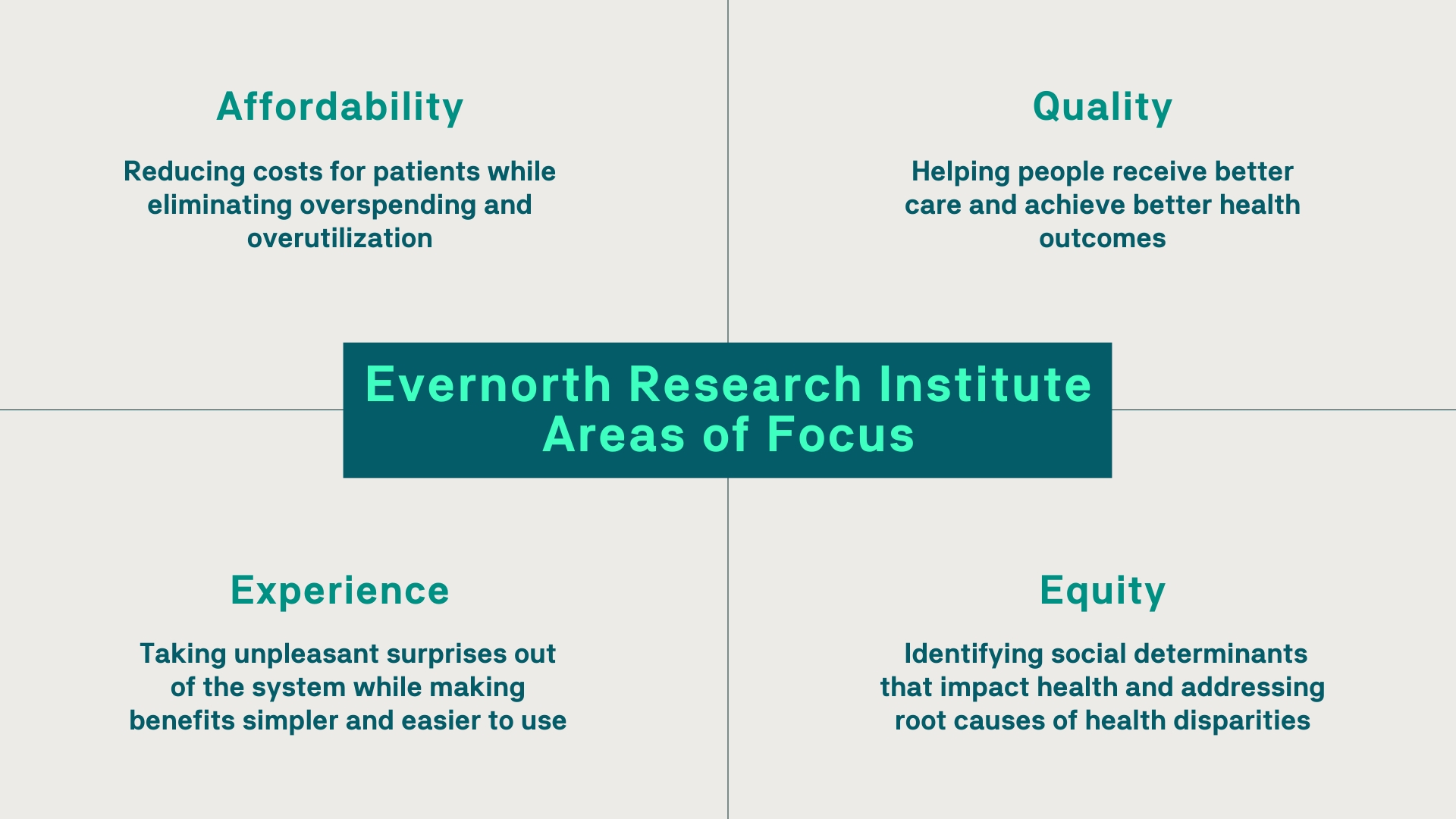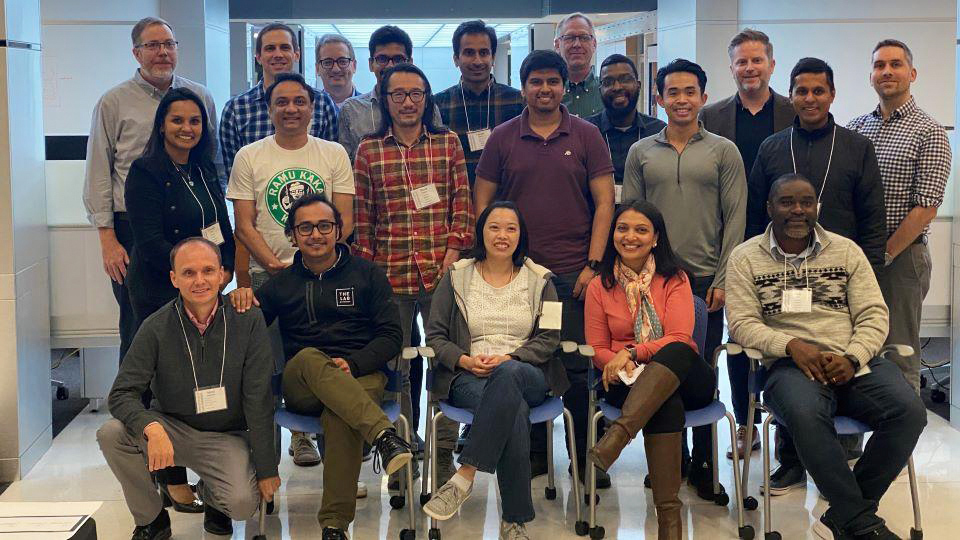It’s been said that data is the oil of the digital economy. For health care, data is the jet fuel: Powering solutions and strategies for improving health outcomes, patient experiences, and driving down costs.
Most health care organizations understand that generating actionable intelligence from their data can help improve care and health outcomes. However, many health care companies are lacking data, talent and a solid strategy for turning their data into intelligence they can act on to improve health at scale.
“The strategic use of data helps our clients understand how to support plan members and their physicians in improving health outcomes and plan performance,” said Glen Stettin, MD, senior vice president and chief innovation officer at Evernorth, The Cigna Group’s health services division. “Health care is a data-rich industry, and we have found our work with data and analytics can improve health and patient experiences by improving preventive care, diagnostic and treatment strategies.”
At the helm of this push to use health care data to better understand and solve health care’s biggest challenges is the Evernorth Research Institute, the research and thought leadership arm of Evernorth. The team of 30 researchers and data scientists partner externally with leading scientific institutions and work in tandem with the physicians, nurses, therapists and pharmacists across the Evernorth brands to produce research that informs action for improving people’s health.
Urvashi Patel, Ph.D., vice president of the Evernorth Research Institute, is leading these efforts. Dr. Patel is a health services researcher with deep expertise in population health, including the impact of social determinants of health on outcomes. For over two decades, she has led analytics and research teams for health plans and hospitals. Our newsroom staff sat down with Dr. Patel to better understand the Evernorth Research Institute, including the insights the team unlocks, and how Evernorth works with its partners to turn those insights into action.
Tell me about yourself.
I knew from a young age that I wanted to pursue a career in health care. I grew up in a small town and was inspired by a local family doctor who brought so much compassion to the support he provided to the people in our community, including myself.
I decided the best way I could play a meaningful role in health care was by pursuing analytics and research to help people better manage their health needs. This led to me to pursue a Ph.D. in Health Services Organization and Research and a Master’s in Public Health— giving me a great foundation in health services and social behavior.
Can you give us some insight into the work you did before you joined Evernorth?
Looking back, whether I was analyzing state Medicaid or federal demonstration programs assessing value-based programs, evaluating care services to serve the Bronx community, or supporting employer health plans, each role had one thing in common – using data and analytics to identify opportunities to help people improve their health.
Early in my career, I worked with providers participating in state Medicaid programs across the country to improve care for patients with behavioral and medical conditions. The majority of these patients also faced other social determinants of health challenges, such as transportation and financial barriers to accessing care. We tested different models to support patients, such as physician and pharmacy-led care management programs. This foundation helped me understand the real-world impact social determinants of health have on health outcomes.
Eventually, it led me to Montefiore Health System, the largest health system in the Bronx, because I wanted to get closer to patients and make an even greater impact in the community. The Bronx is one of the poorest counties in the country with some of the highest rates of diabetes, asthma and other chronic conditions. These residents face many barriers to receiving care, including access to transportation, childcare, and housing. I led a population health analytics team that helped developed and evaluate programs for Bronx residents, including home health care, diabetes management, and end stage renal disease care management, to name a few.
At Evernorth, I’m most excited about the potential scale these learnings and make a meaningful impact on the health and vitality of the people we serve.
When did the Evernorth Research Institute launch and why? What business need does it fulfill?
We launched the Evernorth Research Institute in 2022 to focus on our patients’ and clients’ biggest challenges – health care is too expensive, too many people struggle to get and stay healthy, and they are frustrated by their experiences using their health insurance and seeking care. It is our mission to understand the root causes of these challenges and how best to solve them.
The Evernorth Research Institute partners internally across Evernorth, and with clients and academic partners to conduct our research, and we share our findings with our clients and partners to develop new approaches and new capabilities that better address these big challenges.
What are the focus areas for the research team?
Our major areas of focus are on improving health outcomes and affordability. We apply client priorities to these two challenges to further focus our research on the health and affordability challenges to populations with special needs, such as children, women, the elderly, and people whose health is disadvantaged by social determinants. We also narrow our focus by exploring issues for people living with conditions that are high priority for our clients, including chronic conditions, in the categories of cardiodiabesity, mental health, and rare, genetic and autoimmune disease, as well as acute and episodic condition areas such as cancer care and the treatment of musculoskeletal disorders such as back pain and knee pain.
We also explore geographic, health system and provider variation in the use of health care resources to identify and accelerate adoption of best practices and opportunities to explore new approaches. For example, data might show a certain part of the United States is spending more dollars per person on a specific treatment. That could prompt us to look more closely: Are certain types of providers more likely to use a specific type of treatment? Are any hospital systems using specific types of treatment? We can get really granular in understanding those variations, then work with our product partners to find ways to address that variation in care.

The Evernorth Research Institute's four main areas of focus
Do you have an example of an anomaly you’ve uncovered, the insights you were able to draw, and the actions those insights influenced?
We have been taking a close look at the attention deficit hyperactivity disorder (ADHD) space and see that more people are being diagnosed with it. We see that parents who have children with ADHD are facing some challenges, including taking more time off work to care for their kids. We see this as an opportunity to bring benefits that can help address this challenge that parents are facing.
In response to this insight, we are kicking off a pilot program later this year to test a benefits solution that would help parents and other caregivers alleviate some of the tensions and stress-related symptoms they might be experiencing. We’ll be monitoring the pilot closely, and if the data supports it, we could very well turn that pilot program into a solution for our members.
In every case, we look at groups or areas that may stand out from others. Many of these are under-resourced or under-served in areas like income, distance to a pharmacy or medical office, transportation, and distance to a food source. We see commonalities among people of specific races and genders being affected, as well. Through the Evernorth Research Institute we can elevate those issues so we can start to address them.
Finally, can you tell me about the work you are doing with clients?
We give our clients and the industry useful, actionable information to make decisions that increase access to quality care and lower overall costs. We are working with clients to highlight the trends that we're seeing at a high level across our book of business. We then work closely with our clients to see if those trends apply to the client’s workforce. Every client population is different, with variations in where employees live, the age mix, disease burden, and more.
We are also here for clients who have a particular challenge to help them better understand their employees’ needs and to uncover opportunities for breakthrough improvements.



